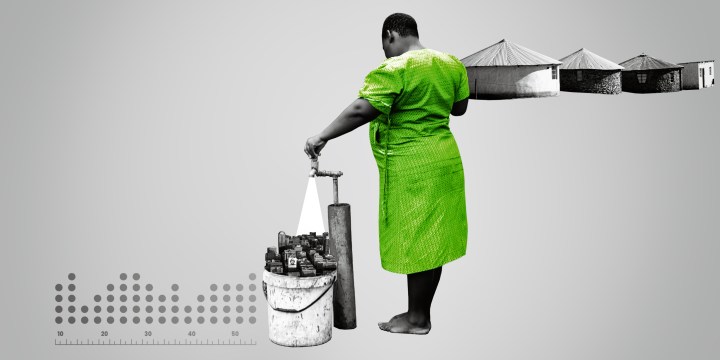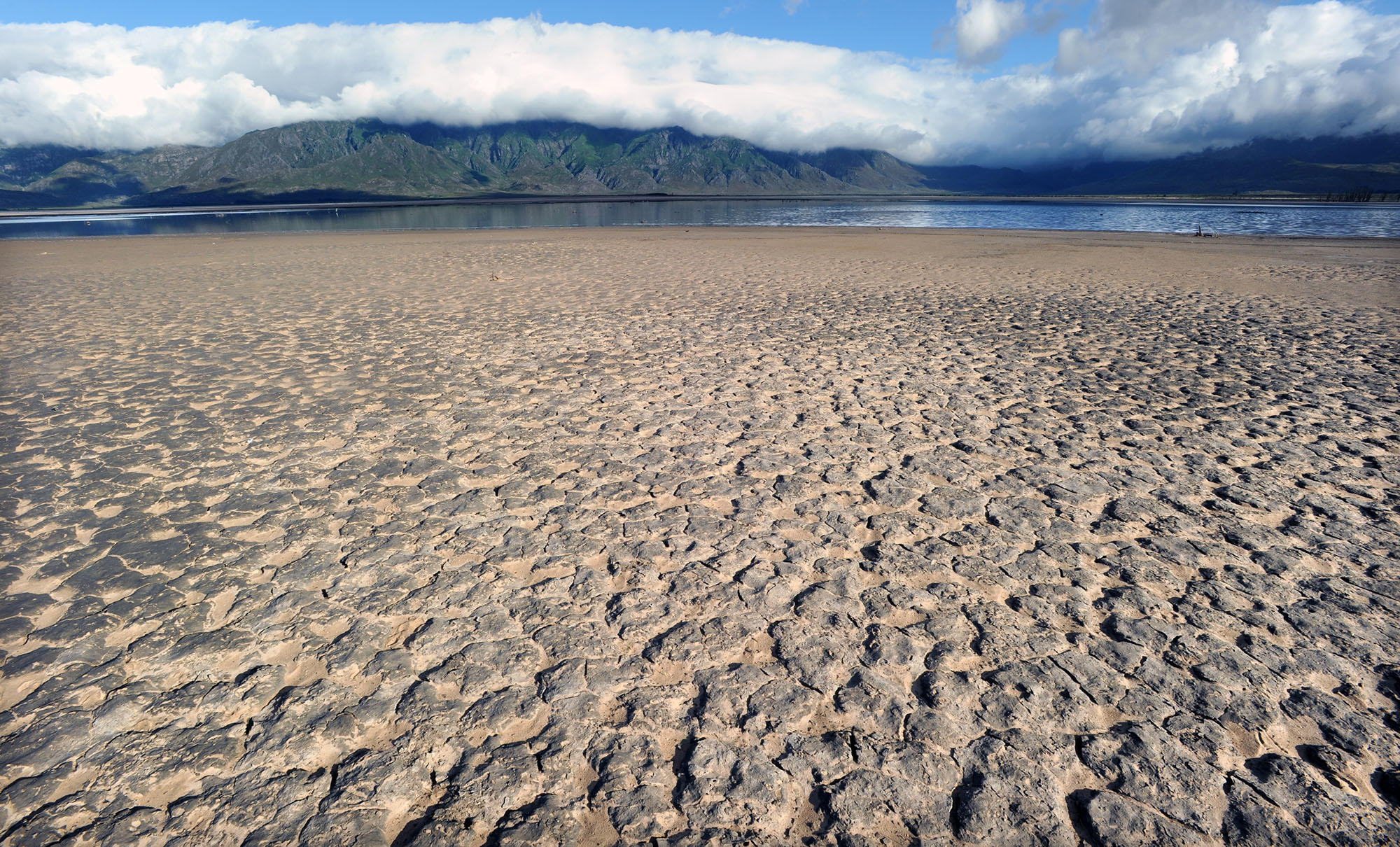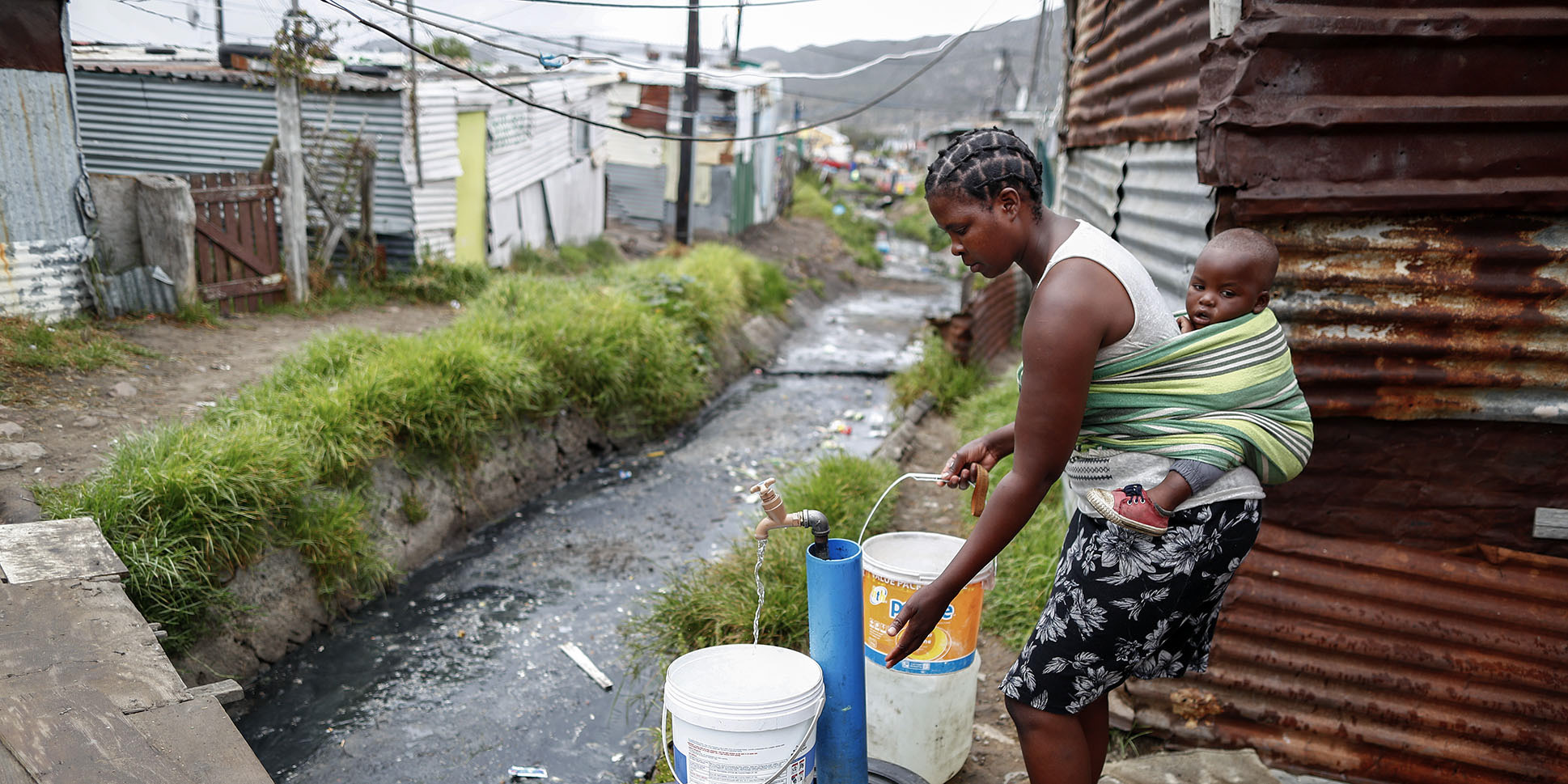PCC EXPERT SERIES — OUR NATURAL RESOURCES
Social and economic redress is vital if drought mitigation measures in SA are to succeed

While efforts to address the risks of drought traditionally focus on agricultural productivity and livelihoods, which remain critical, this essay argues for the urgency of understanding how to adapt and reduce the impacts of drought in urban areas, at the levels of households, businesses and urban systems.
Cities rely on water to exist and thrive. Yet pressure on water resources is increasing due to climate variability and change, growing populations, increasing usage and pollution that is compromising water quality.
Water supplies are increasingly being diversified to include “off-grid” self-supplies alongside municipal reticulated supplies. These diversified supplies need to be managed holistically to avoid undermining one another and the wider water system.
At a minimum, we need to ensure this does not increase socioeconomic inequality and environmental unsustainability in already strained South African towns and cities. We also need to ask what it will take to transform our cities and towns into water-sensitive places where all may thrive.
South Africa relies heavily on surface water supplies and inter-basin transfers that are highly susceptible to changing rainfall and evaporation patterns.
As climate impacts intensify globally, cities are coming under increasing strain, yet rallying to act decisively at the urban scale. Water resources and the provision of water services are particularly impacted by climate variability and change.
Altered patterns of precipitation, increasing evaporation and prolonged, inter-annual drought are growing concerns. Droughts directly impact many aspects of urban functioning, including economic productivity and jobs, health, service delivery, ecosystems and food supply. Drought negatively impacts lives in both rural and urban areas.
While efforts to address drought risks traditionally focus on agricultural productivity and livelihoods, which remain critical, this essay argues for the urgency of understanding how to adapt and reduce the impacts of drought in urban areas, at the levels of households, businesses and urban systems.
Both droughts and water supply systems are regional in nature, extending well beyond a city’s spatial footprint. We therefore need to understand and respond to urban drought risk from a multi-scalar systems perspective, recognising complex urban-rural inter-linkages. In the South African context, with concerns for a just transition, it is particularly important to pay attention to social and economic redress as part of adapting to drought.
Load shedding is here to stay for (at least) another year, while the government dithers on policy
Meeting water needs during times of drought
As cities grow and address service delivery backlogs, more water is needed. Urban migration, internal urban growth, upward mobility and local economic growth are all fuelling increasing demand for urban water resources. Seasonal and inter-annual variation in rainfall and run-off require that water storage, treatment and distribution infrastructure ensure availability of water supplies.
South Africa relies heavily on surface water supplies and inter-basin transfers that are highly susceptible to changing rainfall and evaporation patterns.
As François Engelbrecht, director of the Wits University Global Change Institute, highlighted when reporting on the significance of the 2021 Intergovernmental Panel on Climate Change (IPCC) Sixth Assessment Report (AR6) Working Group 1 findings for South Africa, one of the major risks is more frequent and intense multi-year droughts. He even suggested that the biggest near-term climate change risk — one that could push us over a tipping point — may be a Gauteng day-zero drought.

Eastern Cape communities have gone back to the Mthatha High Court to force a response from the provincial and national governments over access to water. (Photo: morganstanley.com / Wikipedia)
IPCC AR6 shows a measured decrease in mean precipitation for the southern African region and both an observed (ie existing) and projected (ie future) increase in aridity and droughts, as presented in the IPCC Sixth Assessment Report. (Note: CAF = Central Africa; MDG = Madagascar; MED = Mediterranean; NEAF = Northeastern Africa; SAH = Sahara; SEAF = Southeastern Africa; WAF = West Africa.)
The different types of droughts — meteorological, agricultural and ecological — need to be managed differently.
Increasing drought risk is accompanied by increased flood and fire risks, which intersect with other risks. Managing these risks is complex, with various implications for cities in terms of water and food supplies (and thereby costs and affordability), as well as biodiversity impacts.
In addition to climate variability and change, ageing and deteriorating water infrastructure strains water supply and distribution systems, with a lot of water lost to leaks and considerable supply interruptions due to burst pipes and malfunctioning pump stations.
For example, in Nelson Mandela Bay, around 35% of potable water is lost to leaks. Across South Africa, growing numbers of cities and settlements are running very low on water. Innovations are increasing in response to this. For instance, in Sol Plaatje Local Municipality in the Northern Cape, dry sanitation systems have been piloted as an alternative to waterborne sewage systems.
In 2011, during an extreme drought, Beaufort West Local Municipality in the central Karoo built South Africa’s first direct potable reuse plant that reclaims and reuses wastewater. These examples represent innovative ways of dealing with water scarcity, but they remain all too rare.
The challenge is to speed up the replication and scaling out of such innovations to many more urban settlements.
In the face of increasing scarcity, municipalities are employing various strategies to severely limit water use. These strategies include usage restrictions, increasing tariffs, pressure reduction, installing devices that monitor and cut off supply, and intermittent water outages.
Efficiency and reduced use are needed to adapt to drought. Yet increased finance is needed to invest in new and diversified water supplies.
In extreme cases, municipalities or private non-governmental organisations resort to driving in water tankers, often resulting in people queuing with buckets for hours to collect water from trucks, leading to tensions and sometimes social unrest. New strategies are needed to adapt before such moments of crisis and unrest occur.
Collective capacity needed
To ensure that water can be piped into urban areas, significant capacity and coordination is needed across municipal, provincial and national government actors.
In South Africa, the national Department of Water and Sanitation is responsible for ensuring that the country’s water resources are protected, managed, used, developed, conserved and controlled in ways that enable the effective and equitable delivery of water supply and sanitation services.
To do so, they work with provinces and local governments, including metropolitan municipalities (metros), which are responsible for delivering water services through the distribution of water to industrial, commercial and domestic users. A challenge emerges during droughts, when government water services departments need to reduce water use to stretch out the resource, which reduces their revenue.
Efficiency and reduced use are needed to adapt to drought. Yet increased finance is needed to invest in new and diversified water supplies, including bulk groundwater abstraction (in some places linked with managed aquifer recharge), water reuse, upgrading distribution infrastructure, inter-basin transfer schemes and, in some cases, desalination plants.
Declining water quality in many cities creates additional water treatment costs, as well as health risks for people and ecosystems.
The growing focus on the importance of ecological infrastructure for managing water stress requires that we better understand catchments and aquifer recharge zones as integrated systems.
The work involved in rehabilitating, managing and maintaining ecological infrastructure, such as invasive species removal in upper catchments and wetlands, could increase jobs in the water sector.
Water in cities depends on how water in the surrounding areas is managed and used, including agricultural and industrial water uses in the wider city region.
Growing attention to sustainable urban drainage in cities is helping water to infiltrate and add to local groundwater sources rather than flow out to sea or surrounding rural areas.
The Greater Cape Town Water Fund is an example of a public-private partnership and evidence-based business case that shows the value of strategic ecological restoration efforts. As part of the project, invasive alien plants are removed to maintain restored native vegetation in priority sub-catchments. Using less water for alien plants increases the yield of the Western Cape water supply system, while also supporting job creation for those doing the clearing.
Water in cities depends on how water in the surrounding areas is managed and used, including agricultural and industrial water uses in the wider city region.
While government is central to managing water resources and drought, it cannot do this alone.
One of the most important ways to reduce water stress is to reduce water use and increase efficiency. This requires collaboration with the private sector and with citizens. In a country mired in mistrust of government, this is difficult to achieve, especially during times of water crisis when tensions are high.
A justice lens on urban drought risk
Although drought can have a significant impact on the livelihoods of poorer households, for many the daily need to secure water and sanitation in addition to income is more challenging.
The challenge includes important gender and age dimensions, as the burden of securing household water often falls disproportionately on women. The impacts of poor health from a lack of clean water for washing, cooking and cleaning often affect children and the elderly more severely.
For local governments, drought can prompt a focus on water infrastructure and increasing efficiency, making it easy to lose sight of justice issues around expanding water access and improving levels of service delivery to low-income communities and informal settlements.
We therefore argue that although drought risks are a concern for social justice, improving access to water services and sanitation is most important for addressing the root causes of vulnerability to drought risk for the urban poor.
It is important to understand the real risk of exacerbating inequalities during a drought, as those with the resources to do so install off-grid water solutions and backup systems, while those who cannot afford it suffer from reduced and intermittent supply and high tariffs.
One area that needs attention is water pricing. Drought places a strain on urban water finance as less water is used when restrictions are in place, resulting in less revenue. In response, municipalities often increase water prices, but rising tariffs can severely impact poor households.
Municipalities still have to cover the high fixed costs during droughts, such as infrastructure and treatment, even if less water is available and used.
Some municipalities have responded by trying to introduce a fixed charge but have met resistance, as that again creates an affordability problem and hits the poor the hardest.
In other instances, there are large and “strategic” water users whose water is subsidised or who pay low prices that were set in advance. This also strains finances. Municipalities therefore face trade-offs between revenue stability and covering costs.
Metros tend to bill for water regardless of how many people are in the household. When there are restrictions, households with high numbers of dwellers get hit hardest, particularly if there are backyard dwellers. The high water bills can financially cripple households, often leading to payment arrears and the suspension of water provision.
In other cases, it is wealthy households that are using large volumes of water, which they feel they can afford. Targeting these wealthy households to reduce water consumption is important in ensuring water for all, but this has a direct impact on revenue and cross-subsidisation.
Meeting demand management incentives, ensuring affordability for the poor and achieving revenue stability are difficult to balance. This also needs to be considered in the broader sustainability context, recognising that in some years rainfall will be above normal.
During drought, diversifying supply often becomes a priority for the government, which adds to the cost of water. This requires attention to who bears that cost. Some businesses might be willing to pay in order to increase security of supply, while households may not be willing or able to pay.
Lack of secure supply and increasing costs drive some water users, who can afford it, to invest in alternative self-supply options, like rainwater collection and storage, wellpoints or boreholes, greywater recycling systems, and in some cases even private desalination facilities.
Decentralising water supply is one way to adapt to low levels of bulk water supply. Although not always preferred by local governments — in part because of challenges in managing water quality — households and businesses often try to manage droughts by supplying themselves. Sinking boreholes or well-points, installing rainwater tanks and greywater systems all require significant investment, making this hard for the urban poor. Rebates for rainwater tanks might help poorer households access their own water supplies.
It is important to understand the real risk of exacerbating inequalities during a drought, as those with the resources to do so install off-grid water solutions and backup systems, while those who cannot afford it suffer from reduced and intermittent supply and high tariffs.
The other justice angle to consider is that of employment. When businesses (like hotels) and industry (like beverage manufacturing companies) are hit with water shortages and/or the costs associated with installing alternative supplies, what does this do to the job market? Does it result in the permanent or temporary layoff of employees, and does this disproportionately affect low-skilled jobs and thereby poorer households?
What does it require both to protect existing jobs in times of water scarcity and to create new work opportunities in the kinds of work required to enhance drought resilience (like maintaining waterways and widespread manual monitoring of water levels, flow rates and water quality)?

A general view of Theewaterskloof Dam on January 25, 2018 in Villiersdorp, South Africa. (Photo by Gallo Images/Brenton Geach)
Building urban drought resilience
Recognising the interconnections between ecological and engineered aspects of the water system, between rural and urban sources and uses of water, and between the water quantity and quality implications of land uses, creates a broad set of opportunities for increasing drought resilience.
A holistic approach enables localised, low-tech, community-based interventions.
This includes re-establishing and encouraging the use and preservation of local springs and reconfiguring local stormwater detention ponds to increase infiltration and groundwater recharge, while also providing local green spaces and recreational facilities.
Local interest or neighbourhood groups (whether constituted as cooperatives or “friends” of civic organisations) can also be mobilised to rehabilitate and maintain local stretches of river and wetlands.
When aiming to strengthen urban drought resilience, it is important to consider the capacities that will be needed to adapt. Drawing on international work in this field, we offer nine dimensions of adaptive capacity that we think are useful for strengthening cities’ ability to deal with recurrent droughts*:
- Awareness: The grasp that various actors have of what drought means for the resilience and sustainable development of cities, for the mission of their organisation/department and for particular areas of responsibility, now and into the future.
- Agency: The capacity to spot, prioritise and develop opportunities for meaningful and timely action in response to information about droughts.
- Leadership: The extent to which a formal leadership team has developed a strategic vision in relation to managing the water and drought aspects of climate change and engages with, supports and legitimises its implementation.
- Champions: The capacity to identify, develop, empower and support a group or “ecosystem” of champions at different levels so that they can be effective agents of change.
- Working together: The capacity to participate in, learn from and act in collaborative partnerships with internal and external groups.
- Learning: The extent to which organisations generate and respond to feedback from innovation, even on a small scale, and make sense of and communicate new information to improve procedures, strategies and mission.
- Programme scope and coherence: The extent to which projects sit within an overall strategic programme of action, suited to the scope of what the organisation is trying to achieve and updated in the light of what is learned.
- Managing operations: The embedding of procedures to come to grips with drought risk in a systematic way to ensure that intentions and policies turn into action.
- Expertise and evidence: The capacity to recognise, access and deploy the necessary technical and change “know-how” and information to make the biggest difference.
For each of these capacities, South African cities offer examples that can be learnt from, adapted, transferred, replicated and scaled out in order to strengthen urban drought resilience.
Often building urban resilience requires working beyond the city scale at the catchment and basin scales. For example, the uMngeni Ecological Infrastructure Partnership (UEIP) focuses on managing investments and implementing projects to improve water security, reduce flooding and support economic growth in KwaZulu-Natal. This includes the city of Durban, where the Palmiet River Rehabilitation Project (PRRP) is a demonstration project within the UEIP.
The PRRP has involved building a diverse and multi-sectoral community of innovation that brings community members (including leaders from the Quarry Road West informal settlement), the municipality and academics into decision-making processes to collate existing data, prioritise actions, bridge communication gaps and avoid duplication of efforts.
One innovation has been the training and employment of local “enviro champs” in informal settlements to drive education awareness campaigns around water and river rehabilitation, especially in local schools.
As much as building drought resilience and water equity require catchment- and basin-scale interventions, it also takes small-scale initiatives, experimenting with what works in local contexts to bring people’s lives and livelihoods into closer connection with water sustainability.

It has become very difficult for most women to balance the time for work, household chores and searching for water. (Illustrative image | Source: EPA-EFE/NIC BOTHMA)
An example of such initiatives might entail training community members in the plumbing skills needed to detect and fix leaks.
The Nelson Mandela Bay Business Chamber coordinates an Adopt-a-School initiative. Local businesses in the metro have adopted schools identified as high water consumers due to faulty or damaged plumbing. The businesses support the schools to fix and replace faulty infrastructure, install new meters to monitor usage and install rainwater tanks and/or boreholes to supplement their supply.
Sustaining and scaling out these sorts of partnership-based community initiatives, especially those that connect high and low-income communities, will be critical to building drought resilience across South Africa’s cities.
Identifying the most important capacities for adapting to urban drought in different contexts and depending on resources is challenging but important.
Moving forward
The risk of drought to cities and growing towns across South Africa is already apparent and set to intensify unless significant change is enacted.
Wasteful water use and losses out of the water system need to be heavily curtailed; the recycling and reuse of water need to be significantly increased; runoff, stream flows and groundwater infiltration need to be enhanced; water pollution needs to be avoided at source and water supplies need to be diversified.
All of this needs to be done in an inclusive and engaging way, so that people across the board understand and are integral parts of solutions. It requires a whole-of-society approach, investing in the work of skilled intermediaries to strengthen and sustain engagement and collaboration between public, private and civil society actors in the science, policy and practice domains within cities, as well as between cities.
Including vulnerable communities that are hard hit by water shortages and water restrictions — but historically have not had a voice in water-planning processes — has to be prioritised.
This includes explicitly considering gender-related aspects when enhancing adaptive capacity. The burden of drought and water shortages often falls disproportionately on women, who tend to take on the demanding and time-intensive task of sourcing water and suffer health impacts due to a lack of water for hygiene.
Children also often suffer the health impacts of using or playing in contaminated water.
As much as possible, initiatives to strengthen urban drought resilience need to create new jobs and livelihood opportunities involved in maintaining rivers, streams, wetlands and infiltration ponds; installing greywater systems and rainwater harvesting systems; and community-based monitoring of water quality and groundwater levels.
Support and new financing models will be needed to ensure that these materialise and can be sustained. DM/OBP
*These nine dimensions or pathways to building adaptive capacity have been developed to structure the Climate Capacity Diagnosis and Development (CaDD) tool, designed to provide organisations and their networks with a systematic and repeatable approach to measure and improve their ability to manage climate change risks and opportunities. For an overview, see Barrott (2015).
Read Part One, Part Two, Part Three and Part Four.
This essay is part of a series that explores challenges and opportunities relating to a just transition in South Africa, with a specific focus on enhancing resilience in ways that improve lives and livelihoods. The series is being published in the lead-up to the Presidential Climate Commission’s multistakeholder just transition conference on 5 and 6 May.
This essay series has been produced by the Presidential Climate Commission Secretariat and New Climate Economy, with support from the Danish Ministry of Foreign Affairs. The interpretations and findings set forth in the essays are the authors’ alone.
[hearken id=”daily-maverick/9366″]






















 Become an Insider
Become an Insider
Bah, it’s all so boring. Just put in an underground reservoir to harvest and store your rainwater, it takes two weeks and 10 years ago cost us R15,000. No municipal leaks, no City Hall accounts, just pristine beautiful free water, gift of the heavens.
Day Zero has arrived at our home for just two months in ten years when we had to use municipal water. For the rest it’s potable and soft, perfect for growing a mountain of vegetables.
So easy, so clean, but no one is interested. Make yours 2m deep, 5m diameter, and plaster it properly. Problem solved. Those who will not hear, must feel.
https://www.bernard-preston.com/green-rainwater-harvesting.html
We go on and on about lateral thinking, and een boer zal een plan maak, but this most basic simple concept that has worked for us for ten years has scorn poured on it by all sundry. So they must feel. But I indulge in long showers without guilt and the water through the winter enables us to grow 90% of a mountain of fresh fruit and veg in a simple, no frills back garden.
I know if everyone like us became greenies and stored our rainwater properly and cheaply underground, and put up solar panels it would bankrupt our municipalities but we have now accepted that the government cannot and will not provide us with these basics. Not in the foreseeable future anyway.
Not forgetting no accounts from the nincompoops at City Hall. That alone makes it worth while.
Bernard Preston